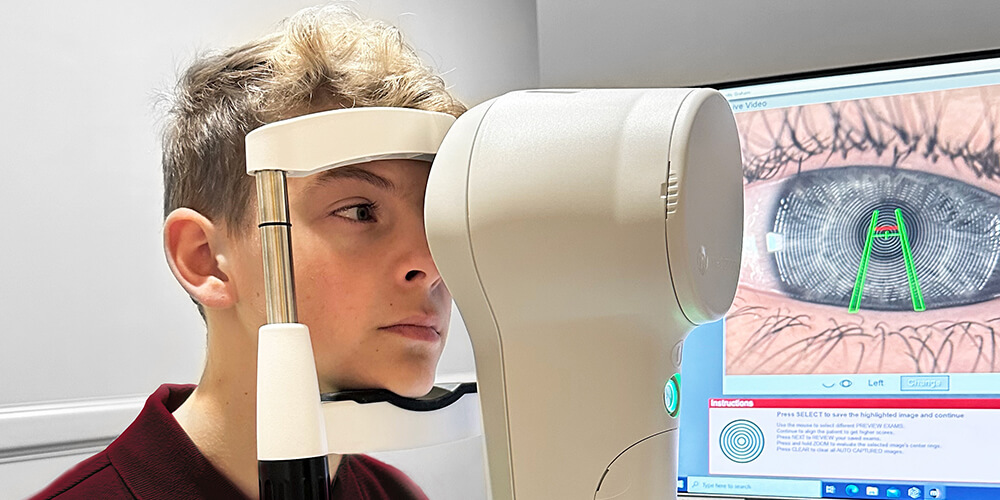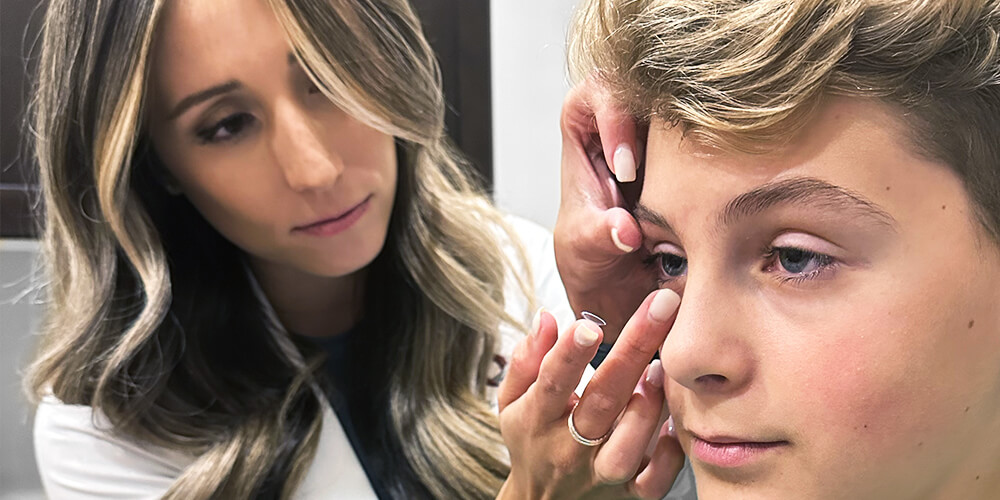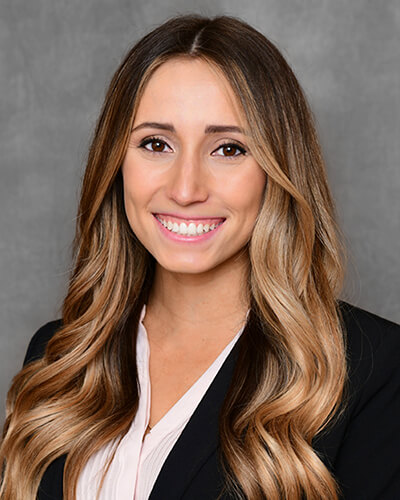Myopia Management Through Orthokeratology
Myopia, more commonly referred to as nearsightedness, is a common refractive condition affecting millions of people worldwide. In fact, 1 out of 3 people in the U.S. alone are nearsighted. People with this condition have trouble seeing objects at a distance clearly because the distance from the cornea (front of the eye) to the retina (back of the eye) is too long, which causes images to be focused in front of the retina rather than on it directly. Traditional glasses and contact lenses have been the standard for successfully correcting myopia in adults and children for years, but more recent developments have proven especially effective at managing childhood myopia. Orthokeratology can slow the progression of myopia in children and even help lower the risk of more serious eye complications later in life.

What is orthokeratology and how does it work?
Orthokeratology (ortho-k) involves the use of specially designed contact lenses to temporarily reshape the cornea and improve vision. Ortho-k lenses are generally worn overnight to gently and gradually reshape the cornea while you sleep, often resulting in clearer vision during waking hours. This can possibly eliminate the need for glasses or contact lenses for distance vision during the day. The special lenses need to be worn every night for optimal vision benefits. Ortho-k lenses can help slow the progression of myopia in childhood and ultimately lead to a lesser degree of it later in life.
How does ortho-k slow the progression of myopia for children?
The custom designed contact lenses reshape the cornea temporarily and provide the eye with a “stop” signal for eye growth in childhood. It’s that signal that essentially slows the progression of myopia and helps prevent myopia-related eye conditions later in life. Children can continue their myopia management treatment throughout their childhood and teenage years or until myopic progression has effectively slowed or stopped (if determined appropriate by your doctor). At that time, there will be the option of continuing ortho-k, be fitted for single vision glasses or contact lenses, or possibly elect LASIK® vision correction if the patient is 18 or older.
Why is myopia management with ortho-k so important for children?
The younger a myopic child is often translates to them having a higher degree of myopia in adulthood. When there’s a higher degree of myopia, there’s typically a more increased risk for developing potentially serious complications, such as retinal holes, retinal detachments, glaucoma, macular degeneration, and earlier onset cataracts, among other conditions. That’s due to the increased length of the eye stretching the ocular tissues in the back, like the retina. That’s why myopia is best managed with early intervention. When performed and monitored by qualified eye care professionals, such as the ones at EyeCare Optical, ortho-k can foster a lower degree of myopia in adulthood and decrease the risks of sight-threatening complications.
Can adults benefit from ortho-k as well?
Yes, ortho-k can be very effective at treating nearsightedness in adults. Many people choose this treatment type over traditional correction methods as it allows them to be free of glasses or contacts throughout the day. Ortho-k is particularly an attractive option for active adults, especially those who regularly participate in water sports. It’s important to note that ortho-k for adults only offers the vision correction aspect of myopia, however, not slowing its progression. That’s because an adult’s eyes have already reached full growth. Whether used for children or adults, myopia cannot be reversed with ortho-k.

What are the benefits of myopia management with ortho-k?
In addition to improving vision and lowering the risk of complications developing later on, ortho-k can provide the following sought-after perks:
- Less worry about glasses or contacts being lost or damaged
- More freedom for adults and children who are active
- Easy daily maintenance
- Less seasonal allergy discomfort and irritation
How fast will my vision improve with ortho-k?
Most patients who choose treatment with orthokeratology experience improved vision in only a few days. Some with lower levels of myopia have reported their vision corrected after the first night. That may take longer depending on the individual prescription, however. In general, your vision should begin gradually improving each day as the cornea is gently molded by the lenses at night. Most people notice their vision staying clearer for longer periods of time after the first 7 to 10 days.
How can I experience better vision with ortho-k?
Appointments specifically for ortho-k will be made in one of our two Sevierville offices (Dolly Parton Parkway or Highway 66) with Dr. Alyssa Invergo. We invite you to schedule your appointment today at EyeCare Optical, a division of Drs. Campbell, Cunningham, Taylor and Haun, by calling (865) 584-0905.


